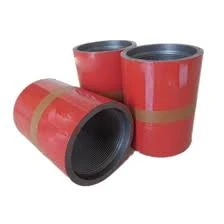- Afrikaans
- Albanian
- Amharic
- Arabic
- Armenian
- Azerbaijani
- Basque
- Belarusian
- Bengali
- Bosnian
- Bulgarian
- Catalan
- Cebuano
- Corsican
- Croatian
- Czech
- Danish
- Dutch
- English
- Esperanto
- Estonian
- Finnish
- French
- Frisian
- Galician
- Georgian
- German
- Greek
- Gujarati
- Haitian Creole
- hausa
- hawaiian
- Hebrew
- Hindi
- Miao
- Hungarian
- Icelandic
- igbo
- Indonesian
- irish
- Italian
- Japanese
- Javanese
- Kannada
- kazakh
- Khmer
- Rwandese
- Korean
- Kurdish
- Kyrgyz
- Lao
- Latin
- Latvian
- Lithuanian
- Luxembourgish
- Macedonian
- Malgashi
- Malay
- Malayalam
- Maltese
- Maori
- Marathi
- Mongolian
- Myanmar
- Nepali
- Norwegian
- Norwegian
- Occitan
- Pashto
- Persian
- Polish
- Portuguese
- Punjabi
- Romanian
- Russian
- Samoan
- Scottish Gaelic
- Serbian
- Sesotho
- Shona
- Sindhi
- Sinhala
- Slovak
- Slovenian
- Somali
- Spanish
- Sundanese
- Swahili
- Swedish
- Tagalog
- Tajik
- Tamil
- Tatar
- Telugu
- Thai
- Turkish
- Turkmen
- Ukrainian
- Urdu
- Uighur
- Uzbek
- Vietnamese
- Welsh
- Bantu
- Yiddish
- Yoruba
- Zulu
Understanding Petroleum Tubing Couplings and Their Importance in Oil Extraction Operations
Understanding Petroleum Tubing and Couplings Key Components in Oil and Gas Extraction
The petroleum industry is a critical pillar of the global economy, facilitating the extraction and transportation of oil and natural gas. Among the myriad of components that play a vital role in this sector, petroleum tubing and its couplings stand out due to their importance in ensuring efficiency and safety in drilling operations. This article delves into the characteristics, types, applications, and maintenance of petroleum tubing couplings, elucidating their role in the oil and gas extraction process.
What is Petroleum Tubing?
Petroleum tubing refers to the pipe used in oil wells to transport produced fluids, such as oil, gas, and water, from the reservoir to the surface and to facilitate various drilling operations. Typically made from carbon steel or alloy steel, this tubing is designed to withstand the extreme pressures and corrosive environments found underground. Its specifications are determined by various factors, including the nature of the fluid being transported, the depth of the well, and the temperature and pressure conditions.
The Role of Couplings
Couplings are essential fittings that connect two sections of tubing together. They play a pivotal role in the integrity and functionality of the entire tubing system. A coupling must provide a pressure-tight connection, thereby preventing leaks that could lead to environmental hazards and potential loss of product. The effectiveness of a petroleum tubing system relies heavily on the quality and performance of its couplings.
Types of Petroleum Tubing Couplings
1. Threaded Couplings These are among the most common types of couplings in petroleum tubing. Threaded couplings create a mechanical lock between the two threaded ends, providing resistance to pull-out forces and ensuring a tight seal. They are easy to install and often used in applications requiring frequent disassembly.
2. Welded Couplings Welded couplings are ideal for permanent connections. They provide a strong bond by welding the tubing ends together, typically used in situations where the risk of leakage must be minimized. Welded couplings offer enhanced strength and durability, making them suitable for high-pressure environments.
petroleum tubing coupling

3. Specialty Couplings Depending on the specific needs of a project, various specialty couplings, such as flanged or slip-on couplings, might be employed. These couplings are often designed for unique operational requirements, such as high-temperature applications or environments with aggressive materials.
Application in Oil and Gas Extraction
In the oil and gas industry, the application of tubing and couplings is multifaceted. For instance, during the production process, the tubing transports crude oil and gas from the reservoir to the surface. In offshore drilling, where water depths may exceed thousands of feet, specialized tubing and couplings are essential for maintaining operational integrity under significant pressure.
Moreover, couplings are crucial during the installation phase, where they enable segments of tubing to be connected efficiently, ensuring the seamless flow of fluids. The ability to have robust connections can prevent costly downtimes and enhance overall production efficiency.
Maintenance of Petroleum Tubing Couplings
Regular maintenance is paramount to ensure the longevity and reliability of petroleum tubing and couplings. Inspecting for wear, corrosion, and damage is essential, especially given the harsh conditions in which these components operate. Routine inspections can identify issues before they escalate into more significant problems, ensuring a safer working environment and reducing the risk of spills.
Additionally, proper handling and storage of uninstalled couplings can prevent contamination and deterioration. It is crucial to keep them free from moisture and corrosive materials, which can compromise their structural integrity.
Conclusion
In conclusion, petroleum tubing and couplings are fundamental components in the oil and gas extraction process. Understanding their types, applications, and maintenance requirements is essential for industry professionals aiming to optimize drilling operations and ensure environmental safety. As technology advances and new materials are developed, the future of petroleum tubing and couplings promises continued innovation, enhancing their performance to meet the ever-evolving needs of the industry. Through conscientious maintenance and selection of appropriate couplings, operators can enhance efficiency, safety, and sustainability in their drilling processes.
-
Tubing Pup Joints: Essential Components for Oil and Gas OperationsNewsJul.10,2025
-
Pup Joints: Essential Components for Reliable Drilling OperationsNewsJul.10,2025
-
Pipe Couplings: Connecting Your World EfficientlyNewsJul.10,2025
-
Mastering Oilfield Operations with Quality Tubing and CasingNewsJul.10,2025
-
High-Quality Casing Couplings for Every NeedNewsJul.10,2025
-
Boost Your Drilling Efficiency with Premium Crossover Tools & Seating NipplesNewsJul.10,2025







